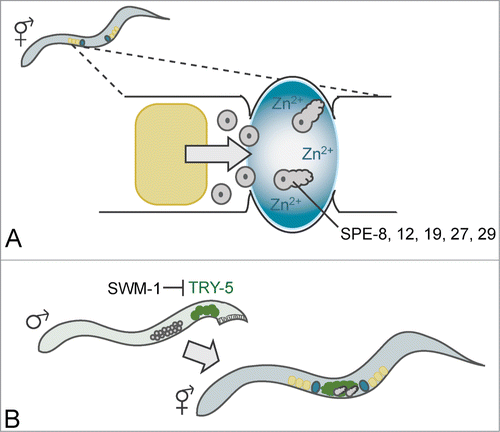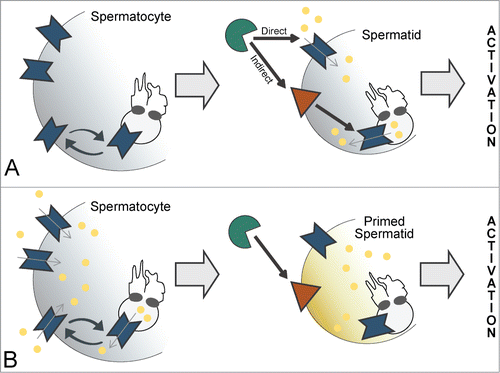Figures & data
Figure 1. Genetic regulation and extracellular signals cooperate to ensure hermaphrodite and male sperm activate at the proper time and place. (A) In the hermaphrodite, spermatids are pushed into the spermatheca by a developing oocyte (yellow). There, they are exposed to zinc (blue), which triggers activation through the spe-8 group of genes. This results in motile spermatozoa with pseudopods, which are stored in the spermatheca until they are used to fertilize oocytes. (B) In the male, sperm are stored as nonactivated spermatids, and maintaining this state requires the protease inhibitor SWM-1. During mating, the male transfers both sperm and seminal fluid containing the trypsin-like serine protease TRY-5 (green) to the hermaphrodite. This causes sperm to mix with TRY-5, which confers a cue to activate. Mature spermatozoa then crawl to the spermathecae to fertilize oocytes.

Figure 2. Models for the regulation and function of SNF-10 in promoting sperm activation. (A) SNF-10 functions in spermatids in response to TRY-5 signaling. TRY-5 (green) acts either directly on SNF-10 (blue) or through an intermediate protein (orange). This signal induces SNF-10's function, which may involve import of cargo or ions (yellow), or participation in protein-protein interactions (not shown). SNF-10 could function either on the cell surface or in MOs. (B) SNF-10 acts prior to activation by importing molecules (yellow) required for the activation process. Once primed, the spermatid can activate in response to a TRY-5-mediated signal. (A,B) The subcellular localization of SNF-10 may be regulated in developing spermatocytes.

